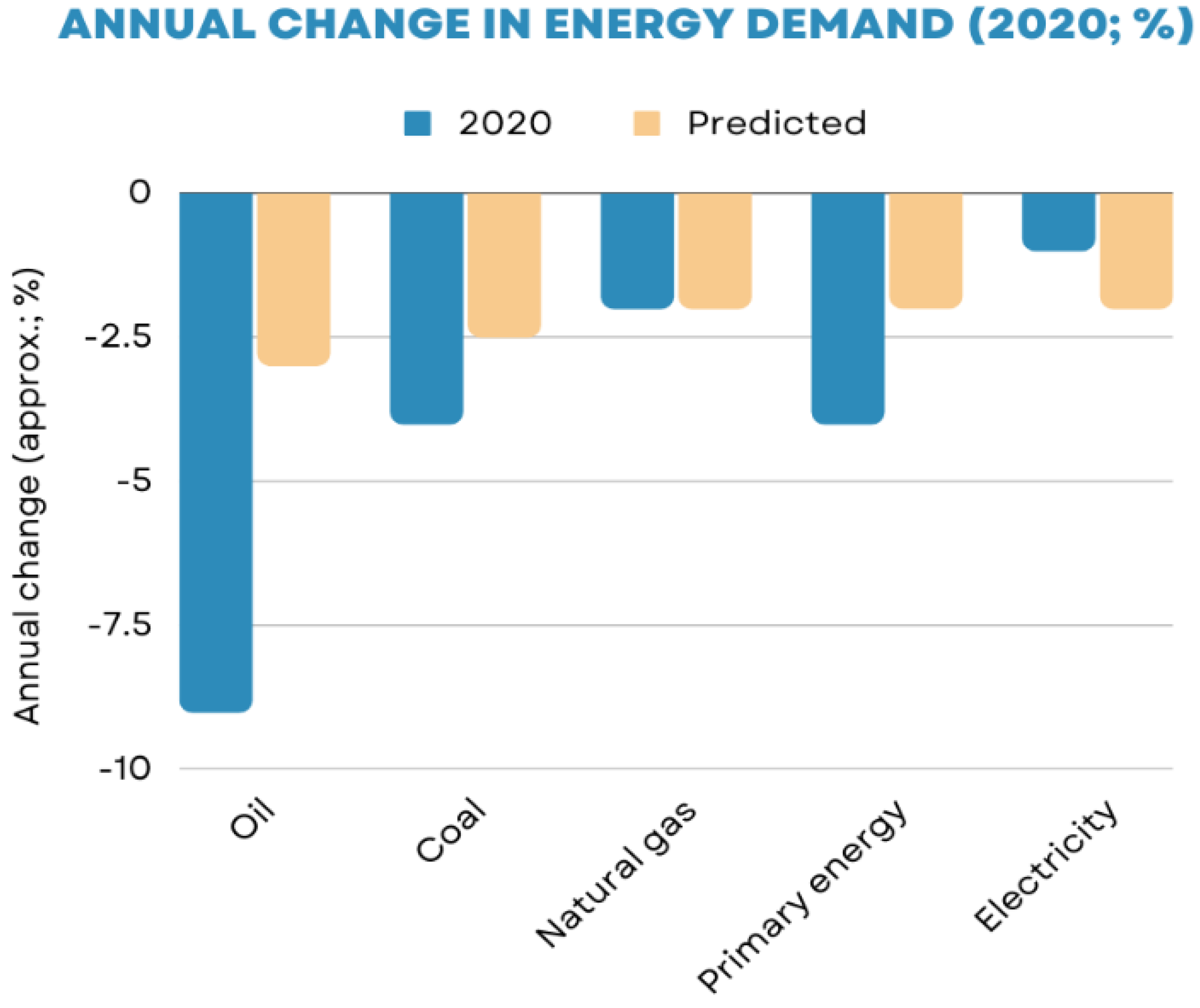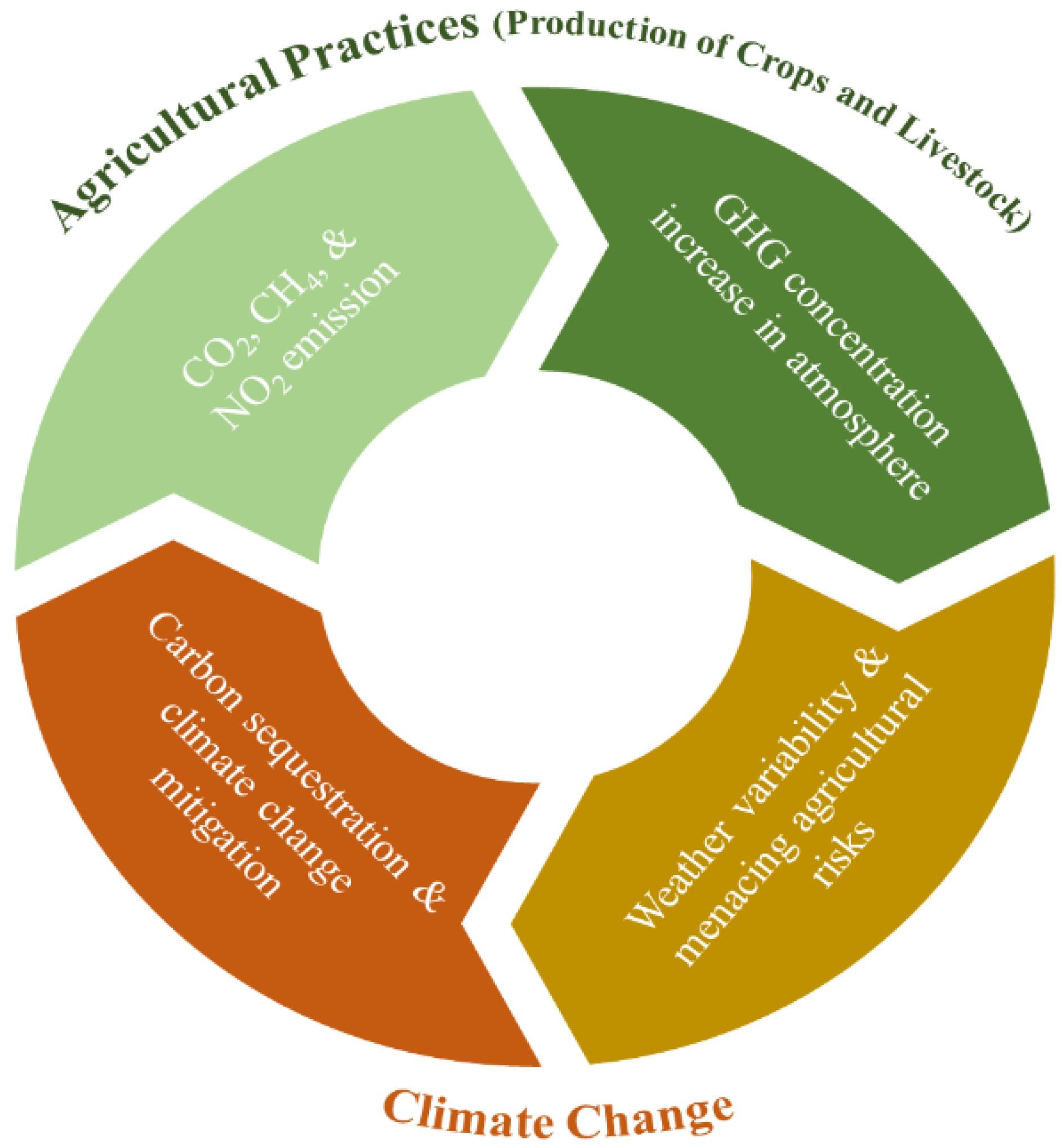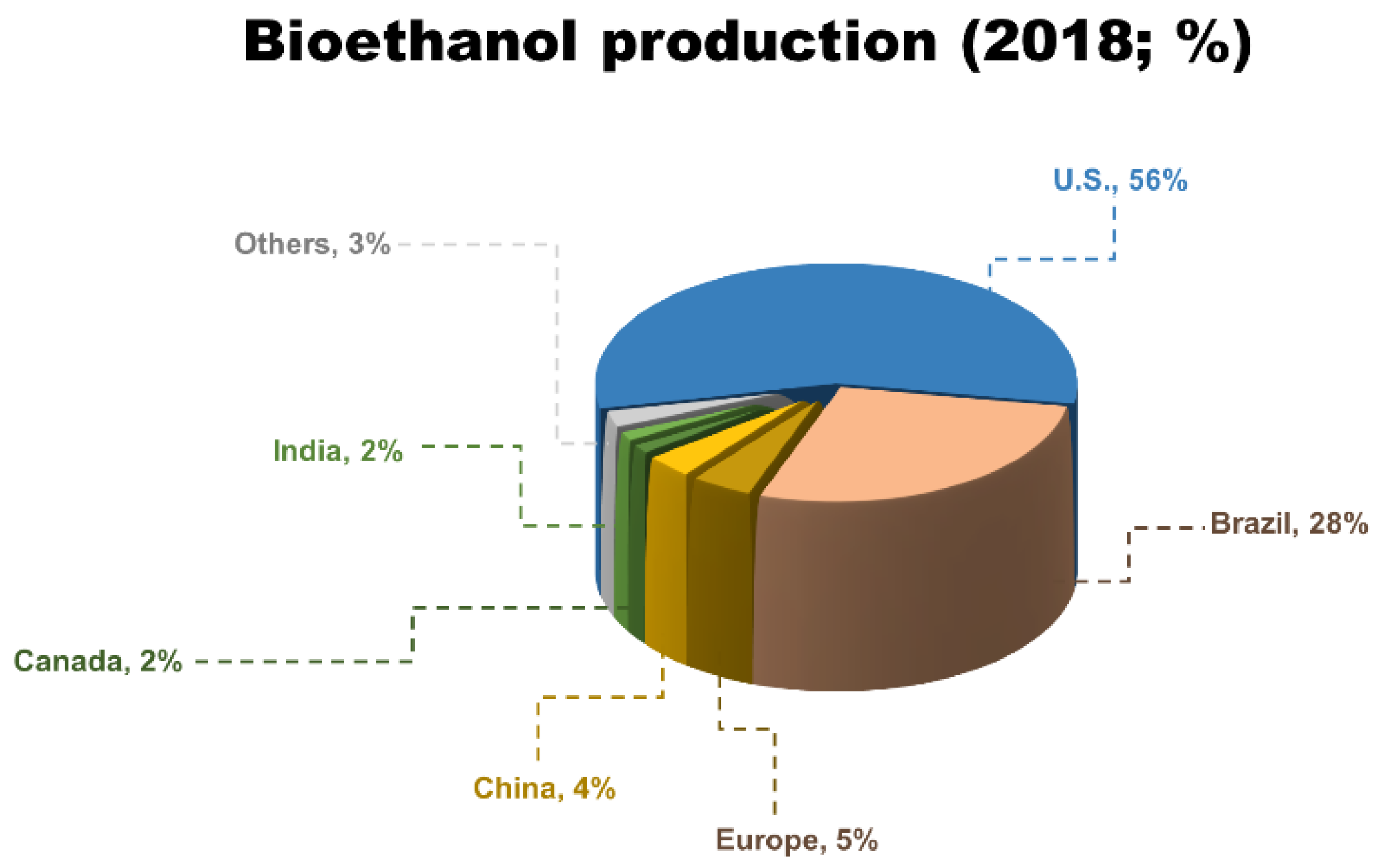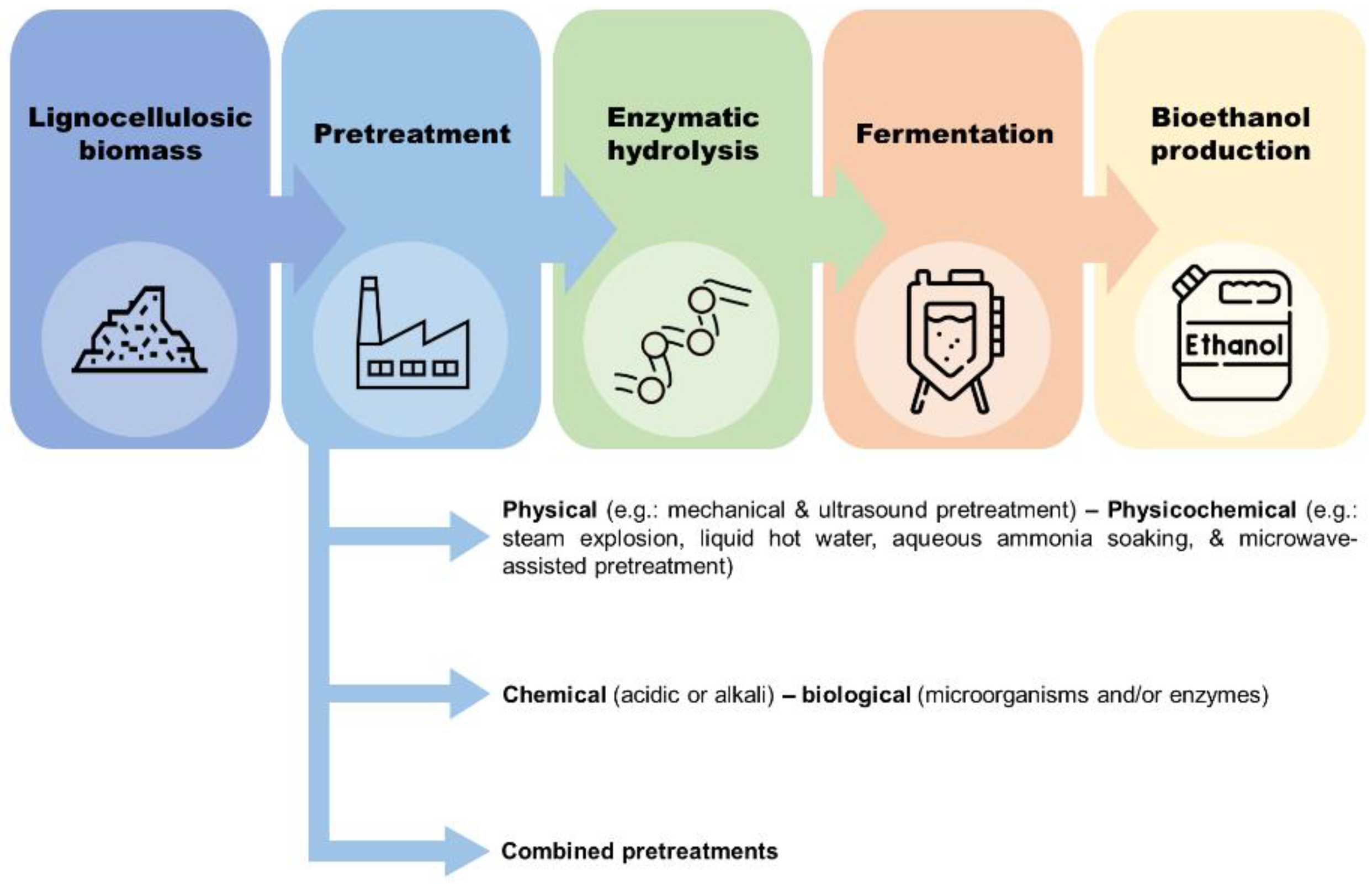It is widely accepted that fossil fuel resources emit greenhouse gases (GHG), which are the leading cause for the climate crisis, with the manufacturing, energy, and agriculture sectors as main contributors. The agricultural sector is composed of diversified and potential mobilizable sources of waste which can become an attractive alternative to fossil fuels for energy production, and thus sequester and use carbon. Therefore, a paradigm shift towards more sustainable energy alternatives, efficient waste management, and new technologies is necessary. One good solution is the energetic valorization of lignocellulosic biomass (LCB) which can also originate from agricultural wastes. The biomass consists of cellulose, hemicellulose, and lignin, which are sources of fermentable sugars that can be used for bioethanol production. However, the recovery of sugars requires the pretreatment of LCB before enzymatic hydrolysis, due to its inaccessible molecular structure. Therefore, pretreatment is required to enhance enzyme accessibility as well as bioethanol production.
- biofuels
- energy conversion
- delignification
1. Introduction



| Biomass | Composition (%) | References | ||
|---|---|---|---|---|
| Cellulose | Hemicellulose | Lignin | ||
| Hemp | 40.1–75.6 | 10.1–14.2 | 10.3–14.6 | [6][32][33][34][35] |
| Rice straw | 28.0–34.7 | 20.0–25.2 | 17.0–19.0 | [21][36] |
| Corn stalks | 31.0–39.0 | 16.5–35.0 | 16.6–25.4 | [21][37][38][39] |
| Sugarcane bagasse | 25.0–45.0 | 28.0–32.0 | 15.0–21.0 | [21][40] |
| Wheat straw | 31.0–39.0 | 23.0–43.0 | 12.0–22.0 | [21][41][42] |


2. Pretreatment of Hemp Biomass
| Raw Material |
Biomass Preparation |
Pretreatment | Composition (Treated; % db) | Saccharification | Reducing Sugars | Fermentation | Bioethanol | References |
|---|---|---|---|---|---|---|---|---|
| Tygra hemp biomass (Cellulose: 50.82% Hemicellulose: 27.79% Lignin: 14.68%) |
|
Chemical: 2% NaOH, 90 °C, 5 h | Cellulose: 62.7% Hemicellulose: 20.16%, Lignin: 15.12% |
|
Total RS: 2311 mg/g |
S. cerevisiae 37 °C, 900 rpm, pH 4.8, 96 h 1 N NaOH or 1 N HCl, |
6.5 g/L (13 g/100 g of biomass) | [55] |
| Hemp stems (Cellulose: 40.66% Hemicellulose: 13.25% Lignin: 15.74%) |
Drying (49 °C, 72 h) Grinding (< 2 mm) |
Chemical: 1% NaOH, solid-liquid ratio 1:10
|
Cellulose: 77.54 % Hemicellulose: 8.72% Lignin: 11.05 % |
|
N.D. 1 | S. cerevisiae (1 mL) SSF (focus point of quadratic equation): solid loading 31%, 37 °C, 96 h, 140 rpm |
76.92 g/L | [54] |
| Industrial hemp biomass (Cellulose: 40% Hemicellulose: 18% Lignin: 16%) |
|
Chemical:NaOH (0.05 M, pH 12.71, solid-liquid ratio 1/10, 190 °C, 40 min) or HOAc (1 M, pH 2.36)
|
Cellulose: 73.61% Hemicellulose: 12.2% Lignin: 7.51% |
Enzymatic hydrolysis: 2.5–10% solid loading, pH 4.8, 100 μL cellulase/g biomass, 50 μL hemicellulase/g biomass, 160 rpm, 49 °C, 72 h |
Focus point (II-VW): Glucose: 43.88 g/L Xylose: 12.13 g/L |
N.P. 2 | N.D. 1 | [58] |
| Hemp woody core (Cellulose: 37.3% Hemicellulose: 19.79% Lignin: 12.35%) |
Preculture (P. eryngii, PDA, 28 °C, 7 days) Cutting (400–800 μm) Air-drying |
Biological:
|
N.D. | Enzymatic hydrolysis: cellulase: 30 FPU/g, citric acid buffer (pH 4.8), 0.01% sodium azide, 50 °C, 48 h | RS (Bio-chem): 372 mg/g |
N.P. | N.D. | [62] |
| Helena hemp stems (Cellulose: 40.13% Hemicellulose: 12.53% Lignin: 14.56%) |
Oven-drying (49 °C, 72 h) Grinding (< 2 mm) |
Three treatments were done: acidic, alkaline, and LHW Chemical: 1% NaOH, solid-liquid ratio 1:10, 170 °C, 30 min
|
After alkaline PT Cellulose: 73.9% Hemicellulose: 7.59% Lignin: 9.21% |
Enzymatic hydrolysis: Cellic® CTec3 (30 FPU/g), NS22244 (140 FXU/g), solid loading 5%, 50 °C, 72 h, 140 rpm |
Glucose: 40.08 g/L |
Incubation 1 g Ethanol Red® yeast, 38 °C, 160 rpm, 25 min. SSF: 37 °C, 140 rpm |
20.1 g/L | [57] |
| Hemp hurd (Cellulose: 45.66% Hemicellulose: 24.57% Lignin: 21.67%) |
Decortication (aqueous decort. sol’n, 75–90 °C), incubation 1 h Injection during incubation (34% H2O2) Alkaline agent (30 g, incubation 5 min) Rinsing + milling (2 mm) |
Chemical: 1.4% acidified NaClO2 (70 °C, 5 h) and 4% NaOH (70 °C, 2 h, ×2)
|
HHH: Hemicellulose: 32.73% LHH: Lignin: 17.99% AHH: Cellulose: 78.03% |
N.P. 2 | N.D. 1 | N.P. | N.D. | [59] |
This entry is adapted from the peer-reviewed paper 10.3390/en15196912
References
- ClientEarth. Communications Fossil Fuels and Climate Change: The Facts|ClientEarth. Available online: https://www.clientearth.org/latest/latest-updates/stories/fossil-fuels-and-climate-change-the-facts/ (accessed on 16 June 2022).
- Wuebbles, D.J.; Jain, A.K. Concerns about Climate Change and the Role of Fossil Fuel Use. Fuel Process. Technol. 2001, 71, 8.
- Bhanumati, P.; de Haan, M.; Tebrake, J.W. Greenhouse Emissions Rise to Record, Erasing Drop During Pandemic—IMF Blog. Available online: https://blogs.imf.org/2022/06/30/greenhouse-emissions-rise-to-record-erasing-drop-during-pandemic/ (accessed on 25 July 2022).
- British Petroleum Statistical Review of World Energy; 2021; Volume 70. Available online: https://www.bp.com/content/dam/bp/business-sites/en/global/corporate/pdfs/energy-economics/statistical-review/bp-stats-review-2021-full-report.pdf (accessed on 26 July 2022).
- Energy Use and Efficiency in Pest Control, Including Pesticide Production, Use, and Management Options—Farm Energy. Available online: https://farm-energy.extension.org/energy-use-and-efficiency-in-pest-control-including-pesticide-production-use-and-management-options/ (accessed on 26 July 2022).
- The Mirage of Industrial Agriculture: Fossil Fuels, Groundwater Irrigation, and Feedlots on the High Plains—NiCHE. Available online: https://niche-canada.org/2020/10/27/the-mirage-of-industrial-agriculture-fossil-fuels-groundwater-irrigation-and-feedlots-on-the-high-plains/ (accessed on 26 July 2022).
- Agriculture, Modern|Encyclopedia.Com. Available online: https://www.encyclopedia.com/science/news-wires-white-papers-and-books/agriculture-modern (accessed on 26 July 2022).
- USDA. Industrial Hemp in the United States. Available online: https://www.ers.usda.gov/webdocs/publications/41740/15853_ages001ec_1_.pdf?v=0 (accessed on 9 June 2022).
- Climate Policy Watcher Fossil Fuel Use in Agriculture—Plant Physiology. Available online: https://www.climate-policy-watcher.org/plant-physiology/fossil-fuel-use-in-agriculture.html (accessed on 15 June 2022).
- European Environment Agency. Agriculture and Climate Change—European Environment Agency. Available online: https://www.eea.europa.eu/signals/signals-2015/articles/agriculture-and-climate-change (accessed on 26 July 2022).
- Adejumo, I.O.; Adebiyi, O.A. Agricultural Solid Wastes: Causes, Effects, and Effective Management. In Strategies of Sustainable Solid Waste Management; Saleh, H.M., Ed.; IntechOpen: London, UK, 2020; ISBN 978-1-83962-560-2.
- Duque-Acevedo, M.; Belmonte-Ureña, L.J.; Cortés-García, F.J.; Camacho-Ferre, F. Agricultural Waste: Review of the Evolution, Approaches and Perspectives on Alternative Uses. Glob. Ecol. Conserv. 2020, 22, e00902.
- Ignaciuk, A.; Mason-D’Croz, D. Modelling Adaptation to Climate Change in Agriculture; OECD Food, Agriculture and Fisheries Papers, No. 70; OECD Publishing: Paris, France, 2014.
- Ahmed, A.T.M.F.; Islam, M.Z.; Mahmud, M.S.; Sarker, M.E.; Islam, M.R. Hemp as a Potential Raw Material toward a Sustainable World: A Review. Heliyon 2022, 8, e08753.
- Baldos, U.L.C.; Fuglie, K.O.; Hertel, T.W. The Research Cost of Adapting Agriculture to Climate Change: A Global Analysis to 2050. Agric. Econ. 2020, 51, 207–220.
- Nowak, A.; Krukowski, A.; Różańska-Boczula, M. Assessment of Sustainability in Agriculture of the European Union Countries. Agronomy 2019, 9, 890.
- Pant, K. Effects of Agriculture on Climate Change: A Cross Country Study of Factors Affecting Carbon Emissions. J. Agric. Environ. 2009, 10, 8.
- U.S. Energy Information Administration (EIA). Renewable Energy Explained—U.S. Energy Information Administration (EIA). Available online: https://www.eia.gov/energyexplained/renewable-sources/ (accessed on 16 June 2022).
- Turgeon, A.; Morse, E. Biomass Energy|National Geographic Society. Available online: https://education.nationalgeographic.org/resource/biomass-energy (accessed on 25 July 2022).
- European Biomass Industry Association. Environmental Benefits of Biomass—European Biomass Industry Association. Available online: https://www.eubia.org/cms/wiki-biomass/employment-potential-in-figures/environmental-benefits/ (accessed on 25 July 2022).
- Isikgor, F.H.; Becer, C.R. Lignocellulosic Biomass: A Sustainable Platform for the Production of Bio-Based Chemicals and Polymers. Polym. Chem. 2015, 6, 4497–4559.
- Britannica, T.E. Wheat|Production, Types, Nutrition, Uses, & Facts|Britannica. Britannica. 2021. Available online: https://www.britannica.com/plant/wheat (accessed on 2 September 2022).
- U.S. Department of Agriculture. Wheat 2021 World Production. Available online: https://ipad.fas.usda.gov/cropexplorer/cropview/commodityView.aspx?cropid=0410000&sel_year=2021&rankby=Production (accessed on 2 September 2022).
- Mcgrath, C. United States Department of Agriculture|Foreign Agricultural Service—China. 2019 Hemp Annual Report. 2020, CH20200018. pp. 1–12. Available online: https://www.fas.usda.gov/data/china-2019-hemp-annual-report (accessed on 2 September 2022).
- European Commission Hemp Production in the EU. Available online: https://agriculture.ec.europa.eu/farming/crop-productions-and-plant-based-products/hemp_en (accessed on 2 September 2022).
- Honig, L. National Hemp Report Executive Summary. 2022. Available online: https://www.nass.usda.gov/Newsroom/Executive_Briefings/2022/02-17-2022.pdf (accessed on 2 September 2022).
- The Editors of Encyclopaedia Britannica. Corn|History, Cultivation, Uses, & Description|Britannica. Britannica. 2022. Available online: https://www.britannica.com/plant/corn-plant (accessed on 2 September 2022).
- Capehart, T.; Proper, S. Corn Is America’s Largest Crop in 2019|USDA. Available online: https://www.usda.gov/media/blog/2019/07/29/corn-americas-largest-crop-2019 (accessed on 2 September 2022).
- Rice Production by Country|World Agricultural Production 2022/2023. Available online: http://www.worldagriculturalproduction.com/crops/rice.aspx (accessed on 3 September 2022).
- USDA. ERS Rice Sector at a Glance. Available online: https://www.ers.usda.gov/topics/crops/rice/rice-sector-at-a-glance/ (accessed on 2 September 2022).
- Figueroa-Rodríguez, K.A.; Hernández-Rosas, F.; Figueroa-Sandoval, B.; Velasco-Velasco, J.; Rivera, N.A. What Has Been the Focus of Sugarcane Research? A Bibliometric Overview. Int. J. Environ. Res. Public Health 2019, 16, 3326.
- Houghton, R.A. Biomass. Encycl. Ecol. 2008, 448–453.
- Semhaoui, I.; Maugard, T.; Zarguili, I.; Rezzoug, S.A.; Zhao, J.M.Q.; Toyir, J.; Nawdali, M.; Maache-Rezzoug, Z. Eco-Friendly Process Combining Acid-Catalyst and Thermomechanical Pretreatment for Improving Enzymatic Hydrolysis of Hemp Hurds. Bioresour. Technol. 2018, 257, 192–200.
- Buck, M.; Senn, T. Energy Self-Sufficient Production of Bioethanol from a Mixture of Hemp Straw and Triticale Seeds: Life-Cycle Analysis. Biomass Bioenergy 2016, 95, 99–108.
- Paul, S.K.; Chakraborty, S. Microwave-Assisted Ionic Liquid-Mediated Rapid Catalytic Conversion of Non-Edible Lignocellulosic Sunn Hemp Fibres to Biofuels. Bioresour. Technol. 2018, 253, 85–93.
- Teghammar, A.; Karimi, K.; Sárvári Horváth, I.; Taherzadeh, M.J. Enhanced Biogas Production from Rice Straw, Triticale Straw and Softwood Spruce by NMMO Pretreatment. Biomass Bioenergy 2012, 36, 116–120.
- Xu, G.C.; Ding, J.C.; Han, R.Z.; Dong, J.J.; Ni, Y. Enhancing Cellulose Accessibility of Corn Stover by Deep Eutectic Solvent Pretreatment for Butanol Fermentation. Bioresour. Technol. 2016, 203, 364–369.
- Wang, Z.; Dien, B.S.; Rausch, K.D.; Tumbleson, M.E.; Singh, V. Improving Ethanol Yields with Deacetylated and Two-Stage Pretreated Corn Stover and Sugarcane Bagasse by Blending Commercial Xylose-Fermenting and Wild Type Saccharomyces Yeast. Bioresour. Technol. 2019, 282, 103–109.
- Öhgren, K.; Galbe, M.; Zacchi, G. Optimization of Steam Pretreatment of SO2-Impregnated Corn Stover for Fuel Ethanol Production. Appl. Biochem. Biotechnol. 2005, 121–124, 1055–1067.
- Rezende, C.A.; De Lima, M.; Maziero, P.; Deazevedo, E.; Garcia, W.; Polikarpov, I. Chemical and Morphological Characterization of Sugarcane Bagasse Submitted to a Delignification Process for Enhanced Enzymatic Digestibility. Biotechnol. Biofuels 2011, 4, 54.
- Maache-Rezzoug, Z.; Pierre, G.; Nouviaire, A.; Maugard, T.; Rezzoug, S.A. Optimizing Thermomechanical Pretreatment Conditions to Enhance Enzymatic Hydrolysis of Wheat Straw by Response Surface Methodology. Biomass Bioenergy 2011, 35, 3129–3138.
- Prasad, S.; Singh, A.; Joshi, H.C. Ethanol as an Alternative Fuel from Agricultural, Industrial and Urban Residues. Resour. Conserv. Recycl. 2007, 50, 1–39.
- U.S. Energy Information Administration (EIA). Biomass Explained—U.S. Energy Information Administration (EIA). Available online: https://www.eia.gov/energyexplained/biomass/ (accessed on 17 June 2022).
- Raj, T.; Chandrasekhar, K.; Naresh Kumar, A.; Rajesh Banu, J.; Yoon, J.J.; Kant Bhatia, S.; Yang, Y.H.; Varjani, S.; Kim, S.H. Recent Advances in Commercial Biorefineries for Lignocellulosic Ethanol Production: Current Status, Challenges and Future Perspectives. Bioresour. Technol. 2022, 344, 126292.
- Hernández-Beltrán, J.U.; Hernández-De Lira, I.O.; Cruz-Santos, M.M.; Saucedo-Luevanos, A.; Hernández-Terán, F.; Balagurusamy, N. Insight into Pretreatment Methods of Lignocellulosic Biomass to Increase Biogas Yield: Current State, Challenges, and Opportunities. Appl. Sci. 2019, 9, 3721.
- Zeng, Y.; Zhao, S.; Yang, S.; Ding, S.-Y. Lignin Plays a Negative Role in the Biochemical Process of Producing Lignocellulosic Biofuels. Curr. Opin. Biotechnol. 2014, 27, 38–45.
- Amit, K.; Nakachew, M.; Yilkal, B.; Mukesh, Y. A Review of Factors Affecting Enzymatic Hydrolysis of Pretreated Lignocellulosic Biomass. Res. J. Chem. Environ. 2018, 22, 62–67.
- Liu, M.; Thygesen, A.; Summerscales, J.; Meyer, A.S. Targeted Pre-Treatment of Hemp Bast Fibres for Optimal Performance in Biocomposite Materials: A Review. Ind. Crops Prod. 2017, 108, 660–683.
- Sausserde, R.; Adamovics, A. Industrial Hemp for Biomass Production. J. Agric. Eng. 2013, 44, 10–13.
- Das, L.; Li, W.; Dodge, L.A.; Stevens, J.C.; Williams, D.W.; Hu, H.; Li, C.; Ray, A.E.; Shi, J. Comparative Evaluation of Industrial Hemp Cultivars: Agronomical Practices, Feedstock Characterization, and Potential for Biofuels and Bioproducts. ACS Sustain. Chem. Eng. 2020, 8, 6200–6210.
- Sánchez, J.; Curt, M.D.; Robert, N.; Fernández, J. Biomass Resources. In The Role of Bioenergy in the Bioeconomy; Academic Press: Cambridge, MA, USA, 2019; pp. 25–111.
- Anukam, A.; Berghel, J. Biomass Pretreatment and Characterization: A Review. In Biomass Pretreatment and Characterization: A Review; IntechOpen: London, UK, 2020.
- Tabil, L.; Adapa, P.; Kashaninejad, M. Biomass Feedstock Pre-Processing—Part 1: Pre-Treatment. Biofuel’s Eng. Process Technol. 2011, 18, 411–439.
- Zhao, J.; Xu, Y.; Wang, W.; Griffin, J.; Wang, D. High Ethanol Concentration (77 g/L) of Industrial Hemp Biomass Achieved through Optimizing the Relationship between Ethanol Yield/Concentration and Solid Loading. ACS Omega 2020, 5, 21913–21921.
- Wawro, A.; Batog, J.; Gieparda, W. Chemical and Enzymatic Treatment of Hemp Biomass for Bioethanol Production. Appl. Sci. 2019, 9, 5348.
- Marcolongo, L.; La Cara, F.; Ionata, E. Hemp Waste Valorization through Enzymatic Hydrolysis for Biofuels and Biochemicals Production. Chem. Eng. Trans. 2021, 86, 127–132.
- Zhao, J.; Xu, Y.; Wang, W.; Griffin, J.; Wang, D. Conversion of Liquid Hot Water, Acid and Alkali Pretreated Industrial Hemp Biomasses to Bioethanol. Bioresour. Technol. 2020, 309, 123383.
- Zhao, J.; Yang, Y.; Zhang, M.; Wang, D. Effects of Post-Washing on Pretreated Biomass and Hydrolysis of the Mixture of Acetic Acid and Sodium Hydroxide Pretreated Biomass and Their Mixed Filtrate. Bioresour. Technol. 2021, 339, 125605.
- Bokhari, S.M.Q.; Chi, K.; Catchmark, J.M. Structural and Physico-Chemical Characterization of Industrial Hemp Hurd: Impacts of Chemical Pretreatments and Mechanical Refining. Ind. Crops Prod. 2021, 171, 113818.
- Norrrahim, M.N.F.; Ilyas, R.A.; Nurazzi, N.M.; Rani, M.S.A.; Atikah, M.S.N.; Shazleen, S.S. Chemical Pretreatment of Lignocellulosic Biomass for the Production of Bioproducts: An Overview. Appl. Sci. Eng. Prog. 2021, 14, 588–605.
- Maurya, D.P.; Singla, A.; Negi, S. An Overview of Key Pretreatment Processes for Biological Conversion of Lignocellulosic Biomass to Bioethanol. 3 Biotech 2015, 5, 597.
- Xie, C.; Gong, W.; Yang, Q.; Zhu, Z.; Yan, L.; Hu, Z.; Peng, Y. White-Rot Fungi Pretreatment Combined with Alkaline/Oxidative Pretreatment to Improve Enzymatic Saccharification of Industrial Hemp. Bioresour. Technol. 2017, 243, 188–195.
- Siqueira, G.; Arantes, V.; Saddler, J.N.; Ferraz, A.; Milagres, A.M.F. Limitation of Cellulose Accessibility and Unproductive Binding of Cellulases by Pretreated Sugarcane Bagasse Lignin. Biotechnol. Biofuels 2017, 10, 176.
